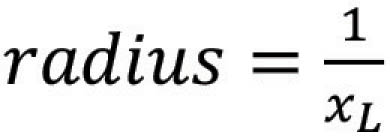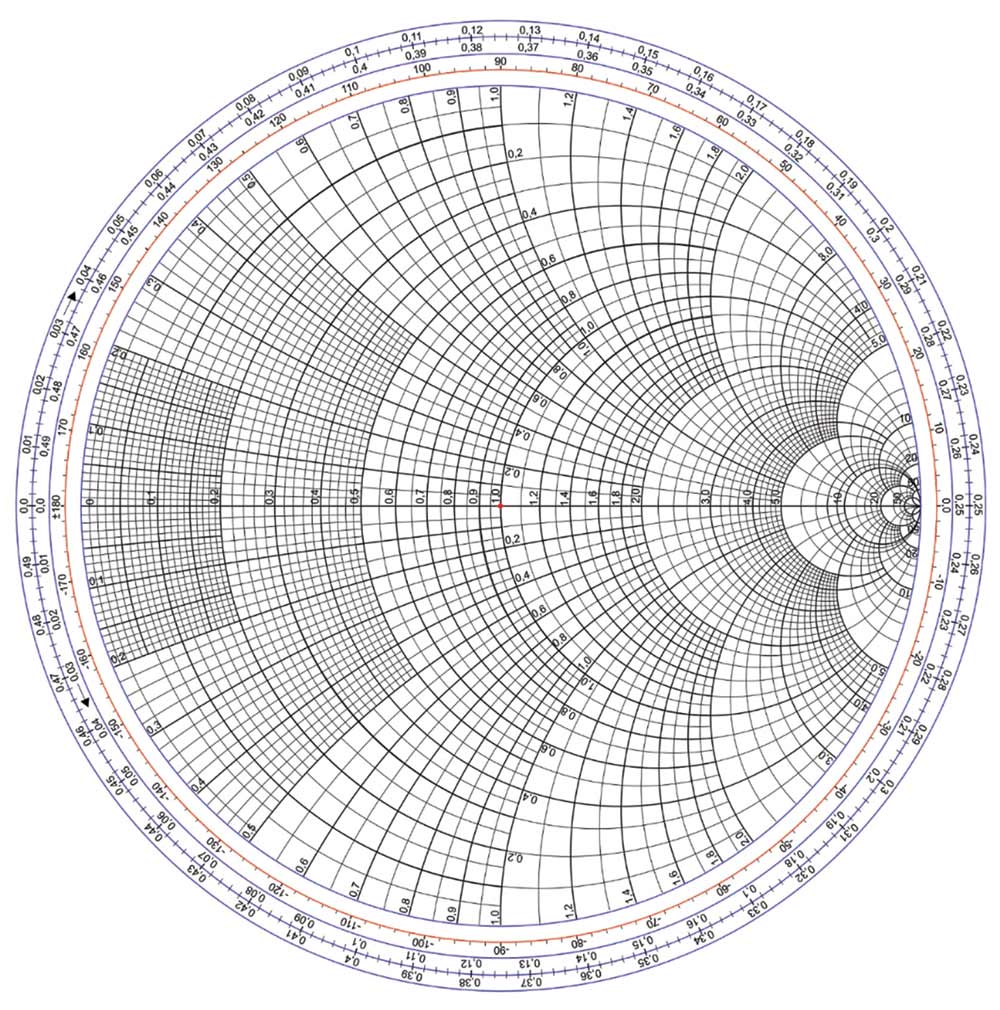his is the second of the three articles devoted to the topic of a Smith Chart. The previous article, [1], introduced the concept of normalized load impedance and concluded with two equations describing the resistance and reactance circles. This article explains the creation of the resistance and reactance circles which are the basis of the graphical operations on the Smith Chart, like the one shown in Figure 1 [2].
 , given by
, given by
This load reflection coefficient can be expressed in terms of the normalized load impedance by dividing the numerator and denominator by the characteristic impedance of the line, ZC.

or

where

is the normalized load impedance, rL is the normalized load resistance and xL is the normalized load reactance.
From Eq. (1.3) we can express the normalized load impedance in terms of the load reflection coefficient as


Equation (1.6) leads to the equation describing the resistance circle

and another equation describing the reactance circle, [1],

Resistance Circles
The resistance circle, described by Eq. (1.7) has a radius

and is centered at

Let us identify some of these circles on the actual Smith Chart; this is shown in Figure 4.

with the radius of

centered at

Γ = 1 unit circle.
Observations: The centers of all the reactance circles lie on the vertical Γr = 1 line. All reactance circles also pass through the (Γr, Γi) = (1,0) point (just like the rL circles).
Let us identify some of these partial circles on the actual Smith Chart; this is shown in Figure 7.
The intersection of any r-circle with any x-circle corresponds to a normalized load impedance, as shown in Figure 9.
References
- Adamczyk, B., “Smith Chart and Input Impedance to Transmission Line – Part 1: Basic Concepts,” In Compliance Magazine, April 2023.
- https://upload.wikimedia.org/wikipedia/commons/7/7a/Smith_chart_gen.svg
- Fawwaz Ulaby and Umberto Ravaioli, “Fundamentals of Applied Electromagnetics,” Pearson Education Limited, 7th Ed., 2015.











